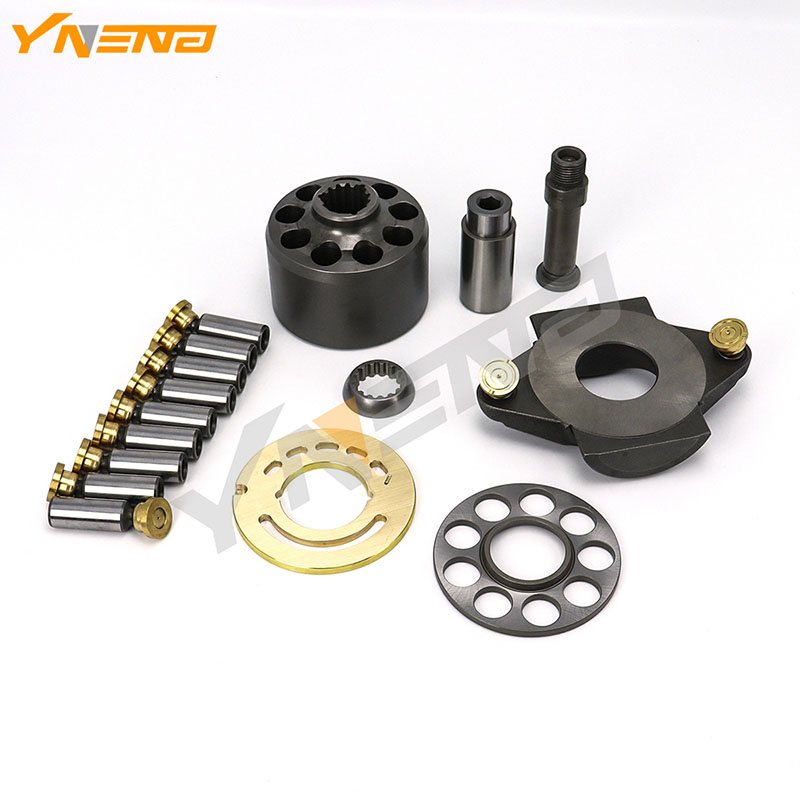Hydraulic Pump Parts – Essential Components Powering Hydraulic Systems
2025-06-12
Hydraulic systems are the backbone of many industrial machines, construction equipment, and manufacturing processes. At the heart of these systems lies the hydraulic pump, a device that converts mechanical energy into hydraulic energy by moving fluid through the system. Understanding the key hydraulic pump parts helps ensure proper maintenance, troubleshooting, and performance optimization.

What Is a Hydraulic Pump?
A hydraulic pump generates fluid flow in a hydraulic system, creating the pressure necessary to power cylinders, motors, and other hydraulic components. Pumps come in various types — gear pumps, piston pumps, vane pumps — each with unique designs but similar core components.
Key Hydraulic Pump Parts and Their Functions
1. Housing (Pump Body)
The outer shell that holds and protects internal components. It is designed to withstand pressure and mechanical stress.
2. Rotor / Gear / Piston Assembly
Depending on the pump type, this is the moving part that displaces fluid:
Gear Pump:Uses two intermeshing gears.
Piston Pump:Uses pistons moving within cylinders.
Vane Pump:Uses rotating vanes sliding in a rotor.
3. Shaft
Connects the pump to the power source (engine or motor) and transmits rotational energy to the internal moving parts.
4. Bearings
Support the shaft and allow smooth rotation, reducing friction and wear.
5. Seals and Gaskets
Prevent hydraulic fluid leakage and contamination, maintaining pressure and system integrity.
6. Inlet and Outlet Ports
Allow hydraulic fluid to enter and exit the pump. Proper design ensures smooth flow and minimal cavitation.
7. Valves (Relief or Check Valves)
Some pumps include valves to control pressure, prevent backflow, and protect the system from damage.
Why Are Hydraulic Pump Parts Important?
Each part plays a critical role in ensuring the pump’s efficiency, reliability, and lifespan:
Performance: High-quality components deliver consistent flow and pressure.
Durability: Robust parts withstand high pressures, heat, and wear.
Maintenance: Understanding parts helps diagnose issues early and replace worn components before failure.
Safety: Proper seals and valves prevent leaks and system failures that could be hazardous.
Common Issues Related to Hydraulic Pump Parts
Seal Failure: Leads to fluid leaks and loss of pressure.
Bearing Wear: Causes noise, vibration, and eventual pump breakdown.
Shaft Misalignment: Results in premature wear and inefficient operation.
Gear or Piston Damage: Reduces fluid displacement and system performance.
Maintenance Tips for Hydraulic Pump Parts
Regularly check and replace seals to prevent leaks.
Monitor fluid quality and change hydraulic oil as recommended.
Inspect bearings and lubricate them properly.
Align shafts accurately during installation.
Use genuine replacement parts for repairs.
Final Thoughts
Hydraulic pump parts may seem like small details, but they are crucial to the smooth operation of hydraulic systems. By understanding each component’s function and maintaining them properly, you can extend the life of your equipment, improve efficiency, and avoid costly downtime. Whether you’re managing heavy machinery or industrial systems, paying attention to hydraulic pump parts is key to success.


